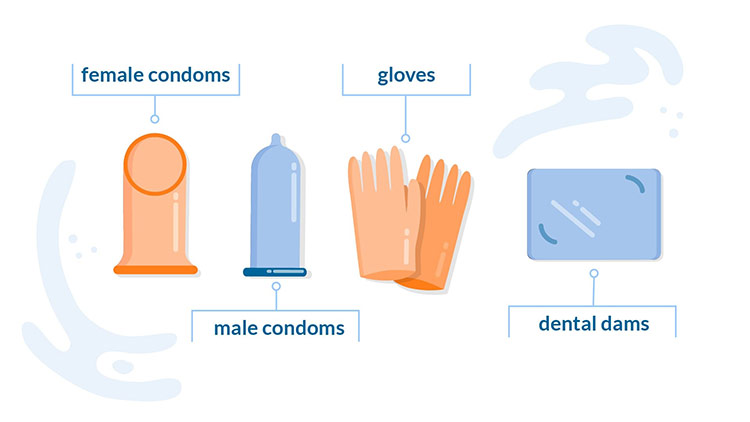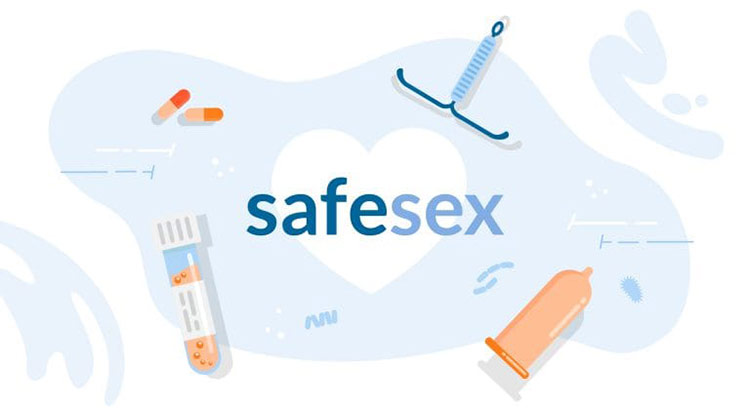Once you are sexually active, you should make sure you always have safe sex. This can help you drastically reduce your risk of contracting STDs such as herpes and HIV. This may be the unglamorous side of sex, but it’s something you can’t ignore. After all, certain STDs can significantly affect your health and have many terrible side effects.
What exactly is safe sex and how can you practice it? In this blog post we discuss eleven safe sex practices that really work. Once you start following these practices, you will find your sex life safe and happy!
1) Know your current status
Once you are sexually active, it is very important that you have your sexual health checked as often as possible. Ideally, you should do this every time you get a new sexual partner. This is even necessary if you have not been sexually active for a long time. That’s because some STDs don’t show any symptoms for the first few months. For example, symptoms of chlamydia may not appear for a while after the patient contracts the disease. By the time you finally realize you have an STD, it may be too late and you could have already passed it on to someone. It is also important that your new sex partner is also checked. This way you can be sure that he or she does not pass anything on to you.
2) Use condoms
Condoms are one of the best ways to prevent the spread of STDs. Although a condom can significantly reduce the risk of infection, you should remember that this method is not 100% effective. Male condoms are the most common form of condoms. However, if a man does not want to wear one during intercourse, his female partner can wear a special condom that fits into her vagina. Some people are allergic to latex, which is what condoms are made of. If this is you, you can still use latex-free condoms. You must use condoms for all forms of penetrative sex. That includes vaginal and anal intercourse.

3) Use other types of protection
Condoms are the best form of protection when you have penetrative sex. But did you know that there are other types of protection that protect you during other sexual activities? For example, you can buy dental dams that are specially designed to protect you during oral sex. If you use your hands during foreplay, you can also use latex gloves to prevent the spread of STDs. Are you currently using a method of contraception to prevent becoming pregnant? Then you have to use something to prevent you from getting an STD. The only form of sexual protection that prevents pregnancy and STDs is a condom. Both male and female condoms provide protection against pregnancy and STDs.
4) Use your protection safely
When using condoms, it is important that you use them safely and correctly. If you don’t, chances are your chances of contracting an STD are higher. It is very important that you and your partner both know how to put on a condom correctly. This can ensure that as much sperm as possible is blocked from entering the vagina. Sometimes it is also necessary to use lubricant with your condom. This is because a condom can tear if it is not lubricated properly. When choosing your lubricant, try to stay away from oil-based lubricants. The oil in the formula can actually increase the chance of the condom breaking.
5) Be careful with alcohol and drugs
Alcohol and drugs alone will not increase the risk of contracting an STD. But they can lead you to make very risky choices. And it’s this risky behavior that can help spread a variety of STDs. Make sure you never drink too much or use drugs as this can lead to a poor sexual decision. If you are very drunk, you may also be at risk of being sexually assaulted. If you’re drinking on a night out, make sure you’re always with your friends. They can help you get home safely if you ever drink a little too much.
6) Practice monogamy
By staying with a monogamous partner, you can keep your chances of contracting an STD very low. This is because you can both get tested to make sure you are clear. An advantage of having an STD-free long-term partner is that you don’t have to use a condom during sex. Once you are in a monogamous relationship, it is important that both you and your partner remain faithful to each other. If you choose to have sex with a partner outside your primary relationship, and this has not been discussed with everyone involved, you may unknowingly introduce an STD into your relationship.
7) Don’t shower after sex
In the past, it was thought that women should shower after sex to ensure no sperm remained inside them. However, it is now known that this can actually increase the risk of STDs. That’s because douching can remove a lot of natural bacteria from the vagina. And most of these bacteria help the body fight STDs. By showering you prevent your body from fighting infections and dangerous bacteria. Instead of using such methods, make sure you use security properly. If you do that, you won’t have to rely on these unnecessary quick fixes.
8) Keep your sexual partners to a minimum
The fewer sexual partners you have, the less likely you are to contract an STD. It makes sense when you think about it because you’re not putting yourself in danger that much. Try to find monogamous sexual partners who you know will be faithful. If you are single, try to stay away from one-night stands as you may not know exactly who you are having sex with. If you ever find yourself indulging in casual sex, make sure you are always protected and use a condom.
9) Clean sex toys
Many couples use sex toys to add an extra element of excitement to their relationship. These shouldn’t spread STDs as long as you use them correctly. If you regularly use sex toys with your sexual partner, make sure they are cleaned after each use. You may also want to sterilize your toys in between uses for extra protection. If you’d rather not bother washing your toys, you can use a condom instead. This keeps the toy clean while you use it. Be sure to thoroughly clean the instructions that come with each toy. Some toys require different cleaning methods.

10) Communication is very important
When you get a new sexual partner, it is very important that you are completely open and honest with him or her. If you have an STD that is currently being treated, you should let them know. This way you can find out which form of protection you can best use to protect your partner. It’s also worth telling them about any STDs you’ve had in the past, even if you’re clean now. You should also encourage your partner to talk to you about his/her sexual health history as well. Some STDs and sexual infections cannot be cured, so you and your new partner should always use protection during sex. If this is the case, inform your partner so that they can stay safe and take the necessary precautions.
11) Abstain from sex
Ultimately, there is only one method that is 100% effective in preventing the spread of STDs. And that means not having sexual contact with others. This is also the only 100% effective way to prevent pregnancy. It is always important to abstain from sex until you are completely ready, both emotionally and physically. Just because you’re in a relationship doesn’t mean you have to have sex right away. You may want to wait until you are completely satisfied with your new partner. If this is the case, make sure you communicate with them to let them know you want to wait. By being honest with all your partners, you help protect each other’s sexual health. If you’re single, abstinence is also a lot healthier than indulging in multiple one-night stands.
You will find that if you follow all the above safe sex practices, you can enjoy a healthy and happy sex life. But not only that, your partners will also benefit from a potentially STD-free sex life.
No one wants to make an emergency trip to the sexual health clinic after having sex. Hopefully this blog post has given you enough ideas on how to prevent this situation from ever happening!

